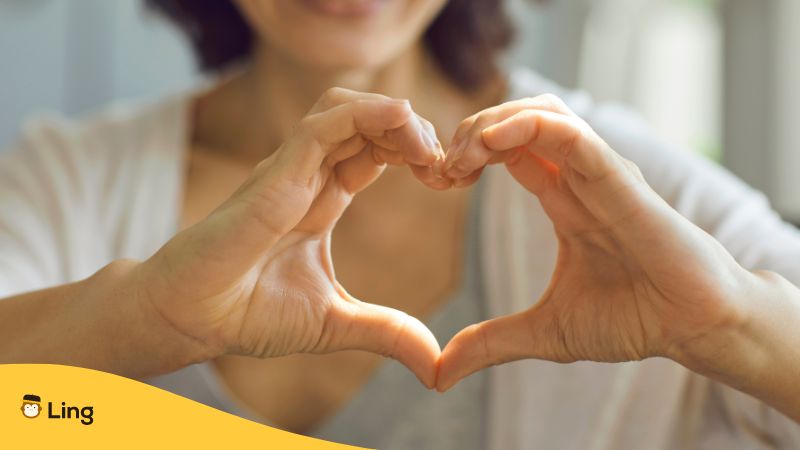Saying “thank you in Chinese” is a crucial skill for anyone interacting with Chinese speakers. Why? Well in their culture, the very idea of expressing gratitude reflects the values of respect, humility, and reciprocity.
In this blog we’ll explore the best way to express thank you in the Chinese language. We’ll cover the standard phrase “xiè xiè” along with other variations. You’ll also learn about appropriate usage and its importance.
Ready? Let’s begin!
How To Say Thank You In Chinese
I’m not gonna lie. Expressing gratitude is super IMPORTANT for Chinese people. The good news? Saying “thank you” in Chinese is straightforward! The most common way to express thanks is by saying “谢谢” or “xiè xiè.” This phrase is pronounced as “sheh sheh.” It is a polite and versatile expression suitable for various situations.
Another way to say thank you in Chinese is “谢谢您” or “xièxiè nǐn.” The additional word “nǐn” means “you.” It is slightly more formal than just “xiè xiè.” Use this expression when you want to emphasize your gratitude towards a specific person.
In some cases, you may want to express a stronger sense of thankfulness. The phrase “非常感谢” or “fēicháng gǎnxiè” conveys a deeper appreciation. It means “extremely grateful” or “very thankful.” But hey! Reserve this expression for situations where someone has done something significant for you.
How Do Chinese People Say Thank You?
How To Say You’re Welcome In Chinese
When someone thanks you in Chinese it’s polite to respond appropriately. Acknowledging their gratitude shows respect. The most common way to say “you’re welcome” in Chinese is “不用谢” or “bù kèqì.” This phrase is pronounced “boo kuh-chee.” It literally means “no need for politeness.”
Another way to express “you’re welcome” is “不用谢” or “bù yòng xiè.” This phrase means “No need to thank me.” It’s suitable when you want to politely dismiss someone’s gratitude. The phrase emphasizes that your help was no big deal. It’s similar to saying “don’t mention it” in English.
In some situations a simple “没事” or “méi shì” is appropriate. This short phrase means “it’s nothing.” It’s a casual way to brush off thanks. Use it with friends or in informal settings.

Thank You Gifts In Chinese Culture
In China, giving a thank-you gift is more than a simple gesture. It demonstrates respect for the recipient and for the hassle, one person had to endure because of you. The act acknowledges their efforts and contributions. Failing to give a gift when it’s expected can be seen as impolite. In fact, it may even damage the relationship!
The type of gift given depends on the situation and the recipient’s status. For casual occasions small tokens like tea or fruit are appropriate. More formal situations call for higher-value items. Examples include alcohol, tobacco, or specialty foods. The gift should always be well-presented. Oh and speaking of being well-presented, do remember that the gift wrapping is as important as the gift itself.
Timing is also crucial when giving thank-you gifts in China. The gift should be presented shortly after receiving a favor or attending an event. Waiting too long can diminish the gesture’s significance. It’s best to give the gift in person if possible. This allows for a face-to-face expression of gratitude.
There are some taboos to be aware of when giving gifts in China. Avoid items associated with funerals like clocks or handkerchiefs. Sharp objects like knives or scissors symbolize cutting ties. Pears represent separation and should be avoided. Stick to gifts with positive connotations.
The recipient’s reaction to the gift is important in Chinese culture. They may initially refuse the gift out of politeness. The giver should insist gently until the gift is accepted. Once accepted the recipient will express gratitude. They may open the gift later in private.

Body Language When Saying Thank You In Chinese Culture
Saying “thank you” in Chinese is often accompanied by specific gestures and postures. And from the way I see it, these non-verbal cues add depth and sincerity to the expression of thanks.
One common gesture when saying thank you in China is a nod. A slight bow of the head shows respect and appreciation. The depth of the nod depends on the situation and the recipient’s status. A more pronounced nod or bow indicates a higher level of gratitude.
Eye contact is another crucial aspect of body language in Chinese culture. When expressing thanks it’s polite to make direct eye contact with the recipient. This shows sincerity and engagement. However prolonged or intense eye contact can be seen as confrontational. Strike a balance with a brief but genuine gaze.
Facial expressions are also important when conveying gratitude. A warm smile demonstrates friendly appreciation. It should be accompanied by a slight raise of the eyebrows. This shows that the smile is genuine and not merely a formality. Avoid overly exaggerated or insincere expressions.
Hand gestures are less common in Chinese culture than in Western societies. When saying thank you hands should be kept at the sides or clasped in front. Avoid pointing or making overly expansive gestures. These can be seen as rude or aggressive.
Posture is another consideration when expressing gratitude in China. Stand up straight with shoulders back. This conveys confidence and sincerity. A slight lean forward shows engagement and attention. But hey! Please avoid slouching or crossing arms as these postures suggest disinterest.
Learn The Chinese Language With Ling
As we learned in this post, learning how to say “thank you” in Chinese is a valuable skill. It demonstrates respect and appreciation for the culture and the native Chinese speakers.
However learning a language is a journey that extends beyond a single blog post. To truly master the art of saying “thank you” in Chinese continued practice and immersion are essential. That’s where the Ling app comes in.
Ling is a comprehensive language-learning app designed to help you learn Chinese effectively. It offers a wide range of interactive lessons and exercises to reinforce your skills. The app also provides cultural insights and real-life scenarios to help you understand the context in which to use your newfound language skills.
So what are you waiting for? Start expanding your Chinese vocabulary with the Ling app today to make meaningful connections!


































































